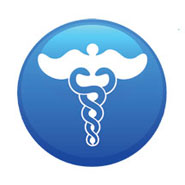New research published in the New England Journal of Medicine concludes that nursing understaffing leads to higher patient mortality rates. A direct relationship between the ratio of nurses to patients is linked to patient safety and a lack of nurses results in deaths. An examination of nearly 200,000 nursing shifts showed that staffing of “RN’s below target levels” is directly and causally related to increased patient mortality.
Cost cutting techniques involve reducing the number of nurses in hospitals and medical clinics. The release of this data now links cost cutting techniques with increased death rates. Nearly a decade ago, another study linked the proper staffing of nurses to better patient outcomes. This follow-up study now highlights the dangers of nursing shortages.
The Results
In one finding, understaffing of nurses leads to inappropriate and dangerous levels of patient transfers and discharges. The study also concludes that nursing shortages are directly linked to higher nursing shift turnover rates. The study concluded the risk of death increased 2% for patients exposed to shifts below target RN staffing levels. The average patient was exposed to 3 nursing shifts below target levels thereby creating a 6% higher risk of death. High turnovers of nursing shifts resulted in a 4% higher death rate.
American Nurses Association
The ANA (American Nurses Association) has commented on this finding by saying that policymakers need to focus on reimbursement systems that reward hospitals for proper nurse staffing levels. The ANA’s recommendations follow an emerging philosophy of creating monetary rewards for better patient outcomes rather than that from cost-per-patient profits.

Reference:
Nurse Staffing and Inpatient Hospital Mortality. Jack Needleman, Ph.D., Peter Buerhaus, Ph.D., R.N., V. Shane Pankratz, Ph.D., Cynthia L. Leibson, Ph.D., Susanna R. Stevens, M.S., and Marcelline Harris, Ph.D., R.N. N Engl J Med 2011; 364:1037-1045.

